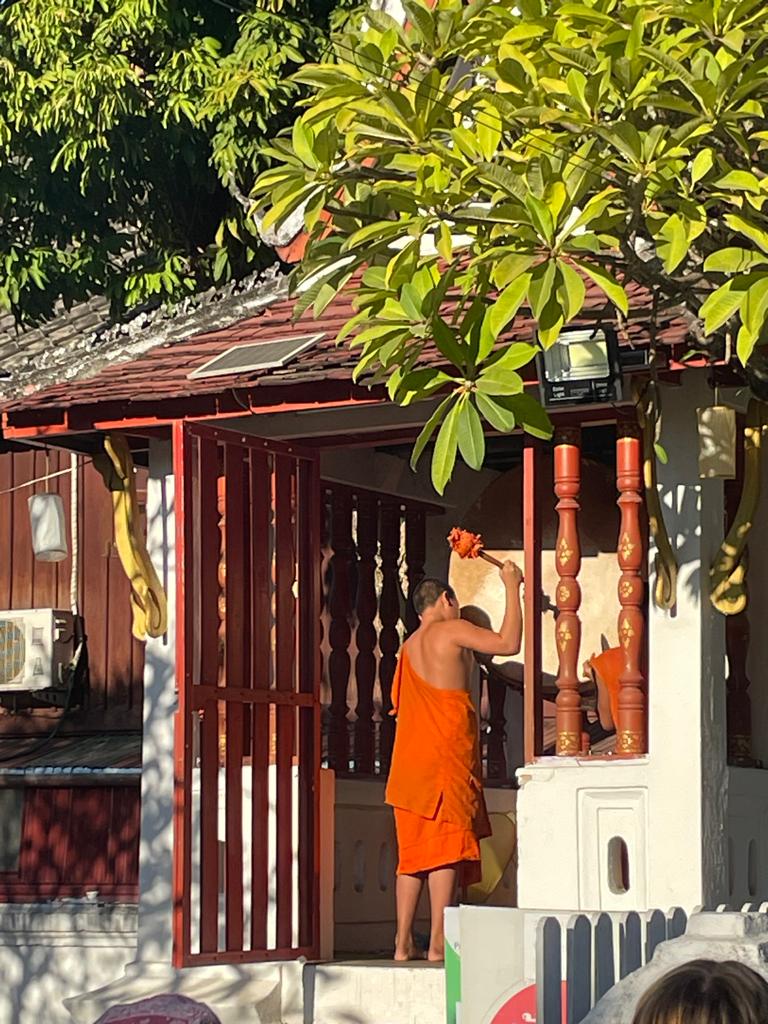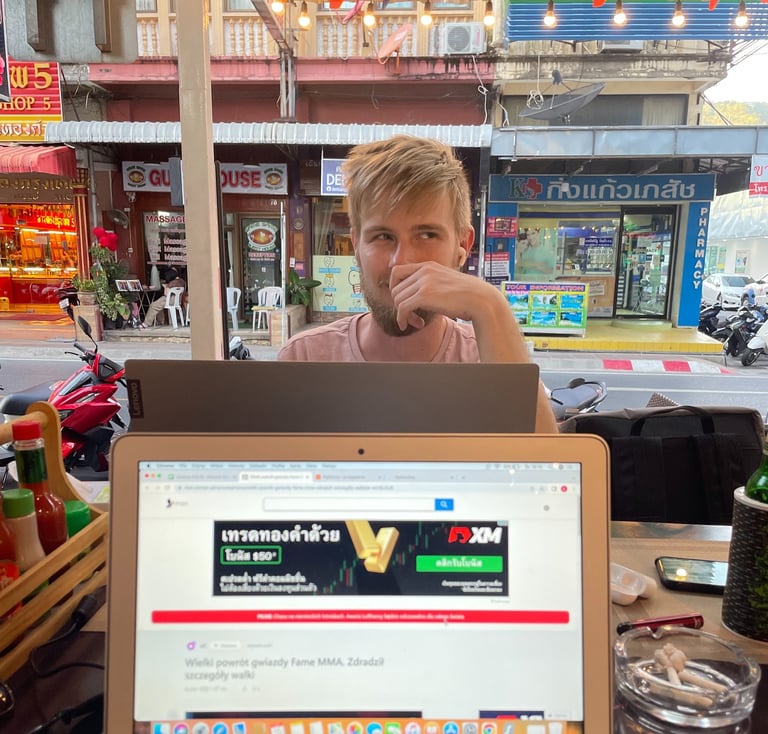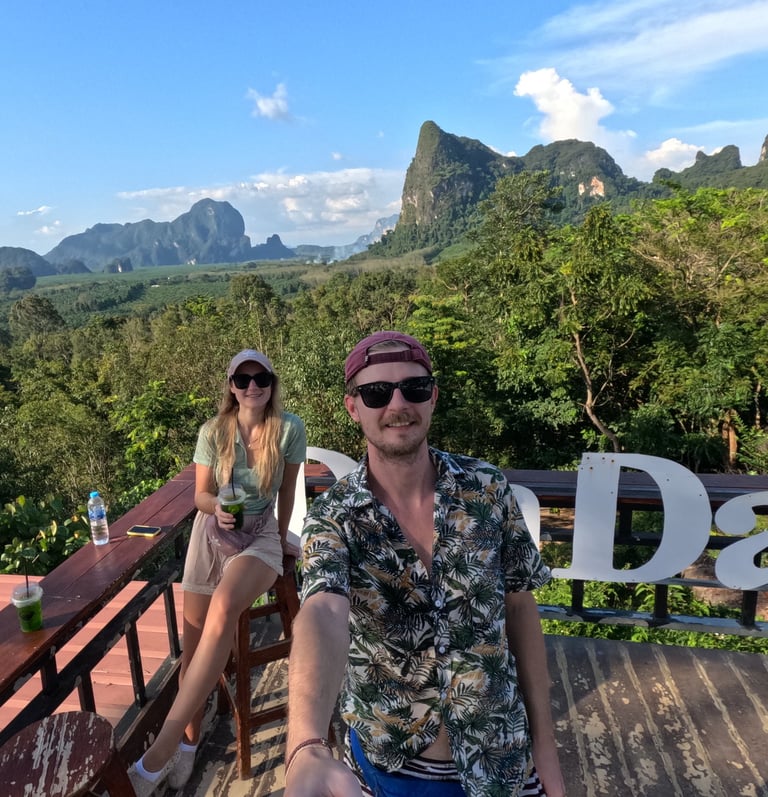
The most beautiful city in Laos?
Before you read about this place, take a look at our general information about Laos. You’ll find details about visas, currency, weather - when it’s the best time to visit - and a few practical tips.
LUANG PRABANG
Table of contents
First impressions of Luang Prabang
Kuang Si Waterfall and bears
The morning alms giving ceremony (Tak Bat)
First impressions of Luang Prabang
Since we always try to show you each place through our own eyes - not just repeat what other travelers write on their blogs or Instagram - I’d like to share not only what you can see in this town or how to get here, but also how we felt about it and what surprised us the most. Honestly, the whole of Laos has been one big surprise - some good, some… less so. But more on that below. If you’re just here for the practical info, you can skip this story and scroll up to the main travel guide ;)


Luang Prabang was the first city we visited right after exploring every corner of the capital (which, as I mentioned earlier, is small enough to be seen entirely on foot - you can read about Vientiane). To be honest, we weren’t disappointed, but definitely surprised. We had imagined this country - and this town - quite differently. Our trip to Laos was supposed to be a sort of backpacking adventure, like our journey through Sri Lanka, where we traveled from north to south, collecting unforgettable memories along the way. But what we found here often didn’t match what we’d expected. Another lesson learned: never travel with too many expectations - especially to unknown places.
We arrived quite late, after sunset. Tired and a little hungry from the journey, all we wanted was to check in, drop our bags, grab some food, and take a little walk around town. But right away, we were greeted by an unpleasant surprise - one that probably influenced our first impression, even though we always try not to let such things get to us. At the hotel, no one spoke a word of English. Time to use the translator app. “No reservation,” said the receptionist. “What do you mean no reservation? I literally messaged you today to confirm our arrival at 7 PM - and you even sent me a list of ‘extras’ I could book, from a station pickup to elephant rides (which, by the way, already got me annoyed)...” After some nervous page flipping, a few phone calls, and awkward silence - found it! Great. Now to pay. We didn’t have enough cash, so we asked to drop our bags and go to the ATM. “No, you pay now.” Okay, then please charge the card through Agoda. “No access to Agoda.” Fine, we’ll pay in dollars - but then came mysterious “exchange” and “service” fees, even though both USD and Lao Kip are widely accepted. My patience was wearing thin. After a long back-and-forth, we finally spoke to the owner over the phone, who apologized and said we could settle everything the next day. Relieved, we finally headed out to find something to eat.
And then came the next surprise. We kept walking… and walking… and walking - only to find the streets empty, quiet, and dark. The restaurants were beautiful - waiters in pressed shirts, tables with white tablecloths - but nearly all were empty. No music, no buzz, just silence. “Let’s go toward the river,” we thought. Surely something would be happening there! But no - it was just as quiet and deserted. We eventually grabbed a quick bite, had a beer, and returned to our room.
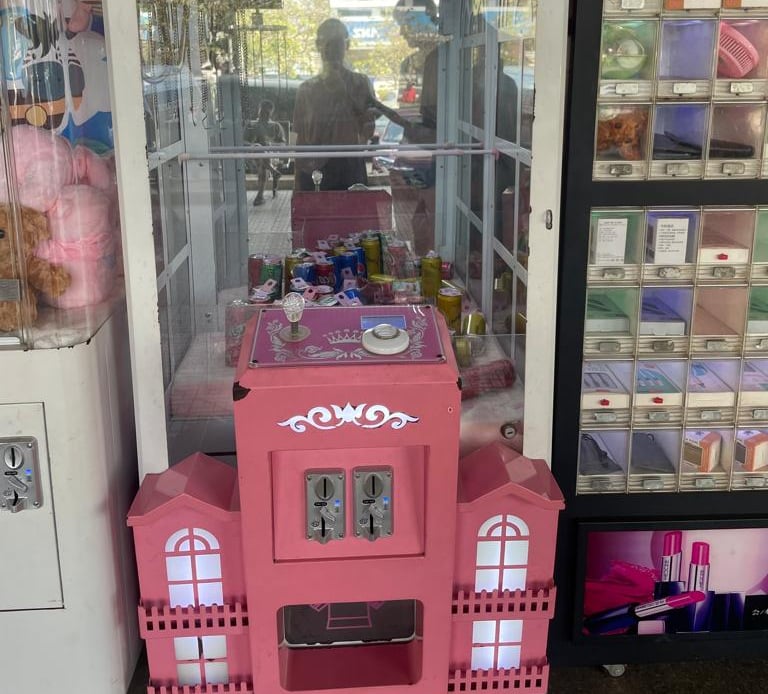

That room, by the way, turned out to be one big, damp, musty-smelling disaster. Thankfully, we’d only booked it for one night. It cost around 100 PLN - not cheap by Lao standards - and had “LUX” in the name, probably only because it had a balcony. I’ll spare you the visuals (though if you’re curious, you can find them on our Instagram highlights - along with my emotional commentary from that unforgettable stay).
The next morning, tired and cranky, we started looking for a new place to stay - already thinking, we’ll probably leave this town sooner than planned. We spent the entire day checking hotels, hostels, and guesthouses. Despite what we saw online - availability and reasonable prices on Agoda and Booking - many places quoted us outrageous amounts in person, up to 100 USD for tiny, average wooden rooms. No way were we paying that. Eventually, we found something decent for 25 USD per night.
You can imagine that our first impression wasn’t great. But we decided to end the day on a positive note - with a glass of wine at sunset over the Mekong - and give Luang Prabang another chance.

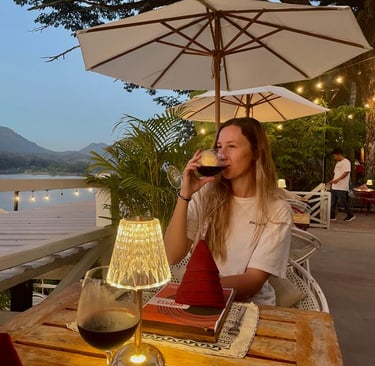

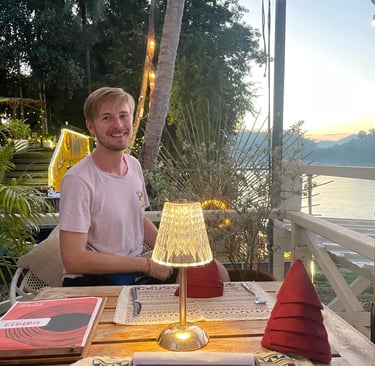
Unfortunately, our evening walk didn’t change much. After a year of living in Asia - in colorful, lively Thailand, neon-bright Vietnam, and vibrant cities across Cambodia, Malaysia, and even Bali - Laos felt completely different. Not worse, just… different. At times, I felt not exactly afraid, but uneasy. Dark, empty streets. Men sitting quietly under trees, smoking pipes. Elegant restaurants with no music, no guests. Who are they open for? Why do they even bother? It all felt strange and unnatural. We soon learned to stock up on snacks in advance - because after 9 PM, finding food was almost impossible.
Luckily, the city redeems itself during the day.
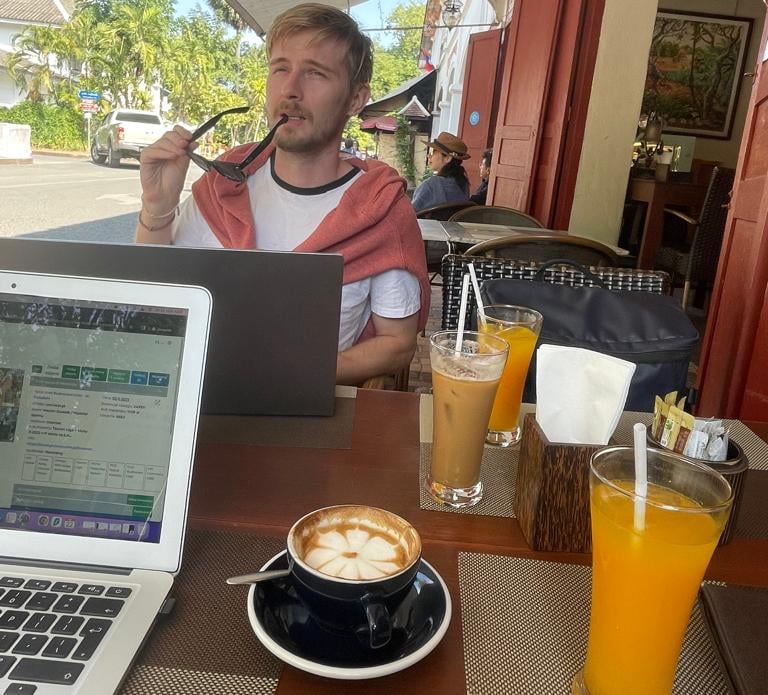

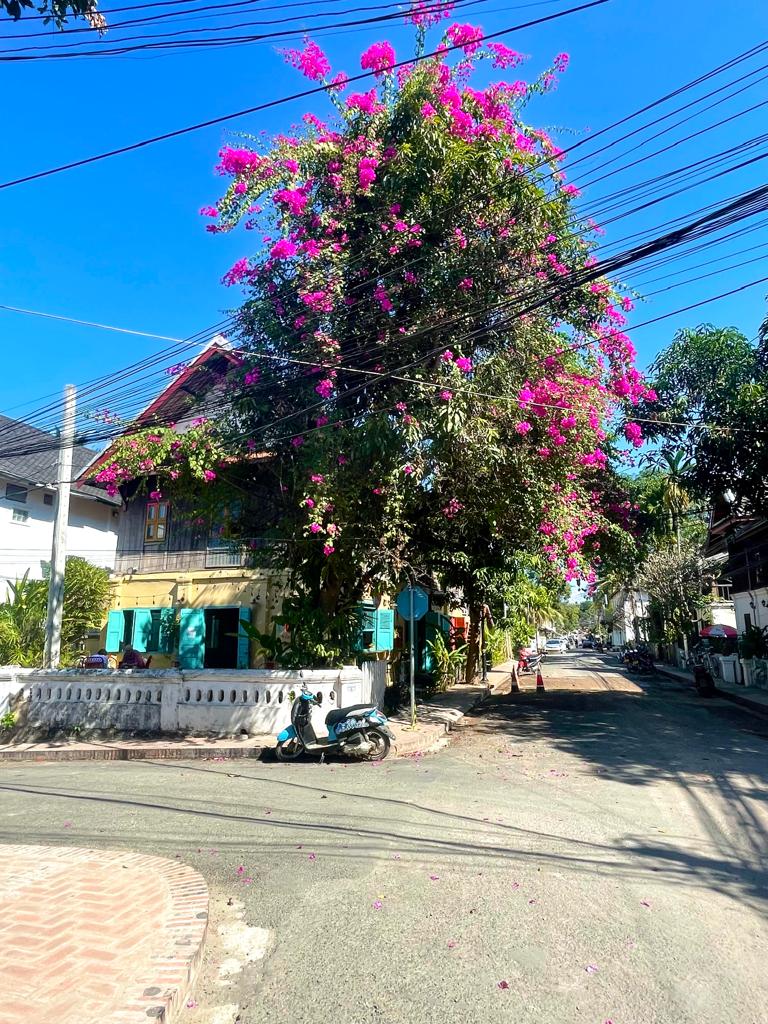

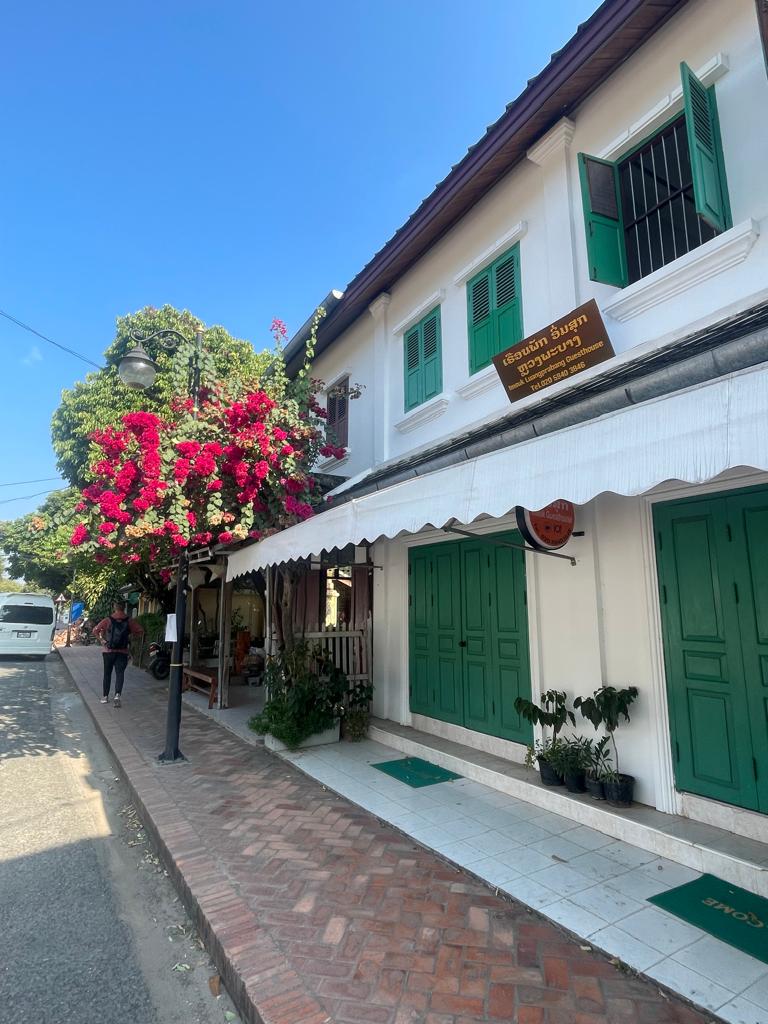

Luang Prabang is indeed beautiful - or at least its touristy part is. The town is full of charming temples, colorful colonial buildings, and picturesque lanes best explored by bicycle, scooter, tuk-tuk, or even an electric cart. By day, its calmness feels peaceful rather than eerie. That is, unless you count the temple gong at 4 a.m. ;)
Still, even though we eventually found good food and charming cafés, the city left us with mixed feelings. It’s lovely and atmospheric, yes - but for us, it lacks authenticity. Its beauty feels curated, like a French-Chinese stage set more than a living Lao town.
You can see strong French colonial influences everywhere - in the architecture, the cafés, and the restaurants (many of which are owned or co-owned by the French). Most hotels, on the other hand, are Chinese-owned. Not surprising, considering they’ve built their own railway line (you can find more about that on Wikipedia) connecting Luang Prabang, Vang Vieng, and the capital, Vientiane - perfect for weekend getaways.
Now it’s clear why finding accommodation at a fair price was so hard. Western tourists aren’t the main target audience here. The biggest spenders are Chinese visitors - busloads of them - arriving on private coaches, staying in Chinese-owned hotels, dining in Chinese-owned restaurants, and heading home via their own railway or highway.
Sadly, in all of this, local Lao businesses are barely visible - hidden behind the charming colonial façades, pastel shutters, and cafés serving croissants and cappuccinos in porcelain cups. When we did go to truly local places, where English menus didn’t exist, the reception was often cautious, sometimes even a bit cold. Not rude - just distant. Unlike in Thailand or Vietnam, where conversations flow easily, here we often felt that locals preferred to keep to themselves.
At first, it made us feel a bit unwelcome. But over time, we started to understand why. Laos’ history hasn’t been kind - and even today, those offering a “helping hand” sometimes end up taking more than they give. So no, dear traveler, the locals won’t smile at you just because you spend money here. Prepare for a different kind of experience - quieter, deeper, and more reflective.
And with that mix of emotions - some disappointment, a lot of reflection, and a touch of respect - we left Luang Prabang. We did manage to do some sightseeing (and freeze a little in the process!) - but that’s a story for the next section :)
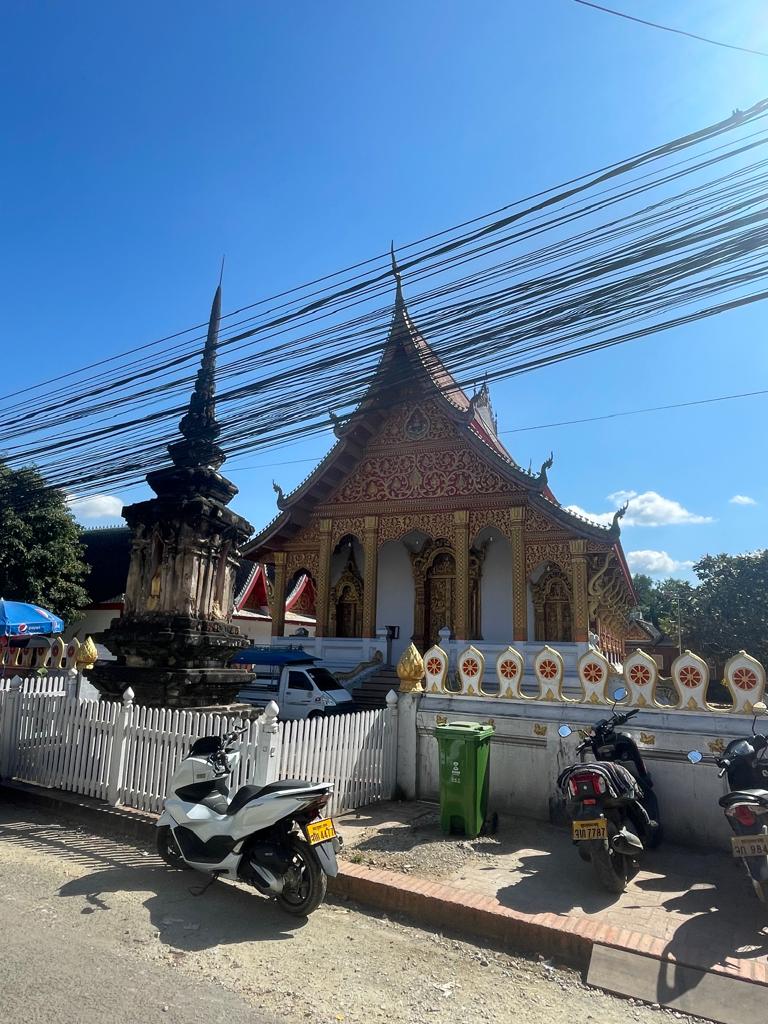

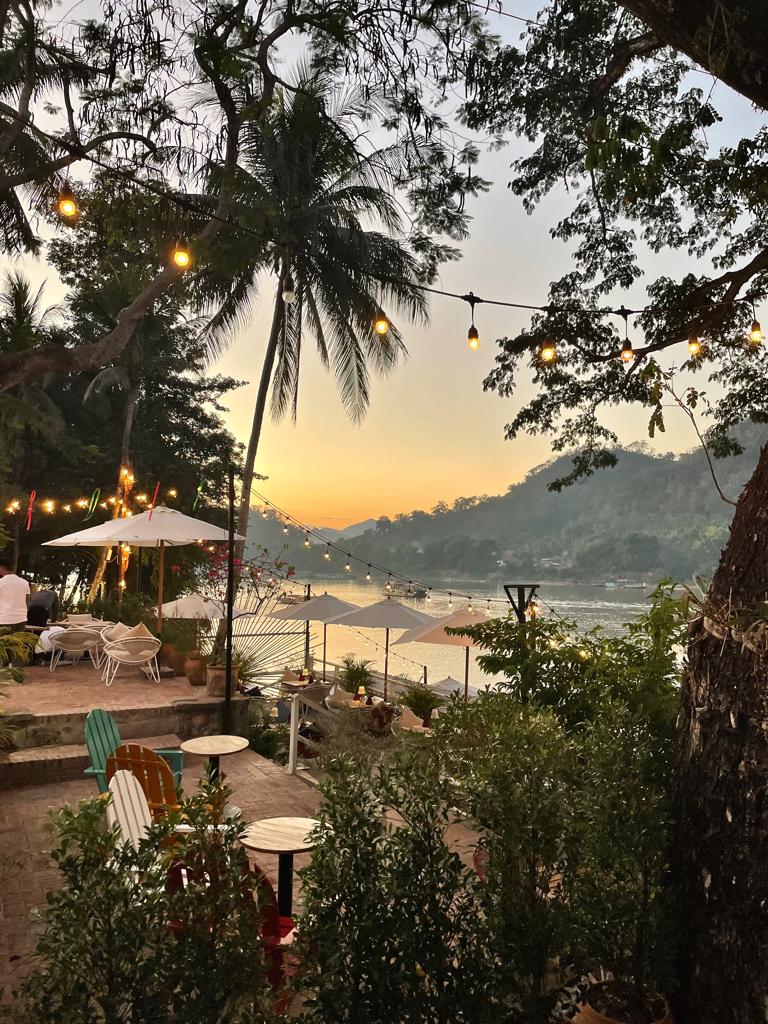

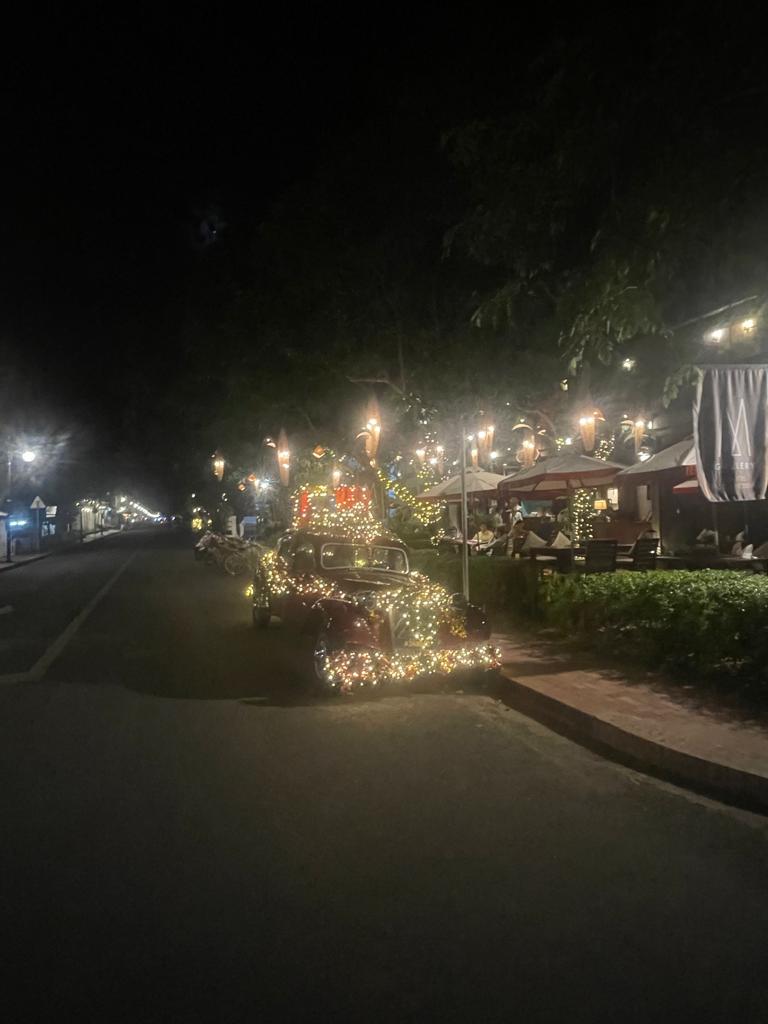

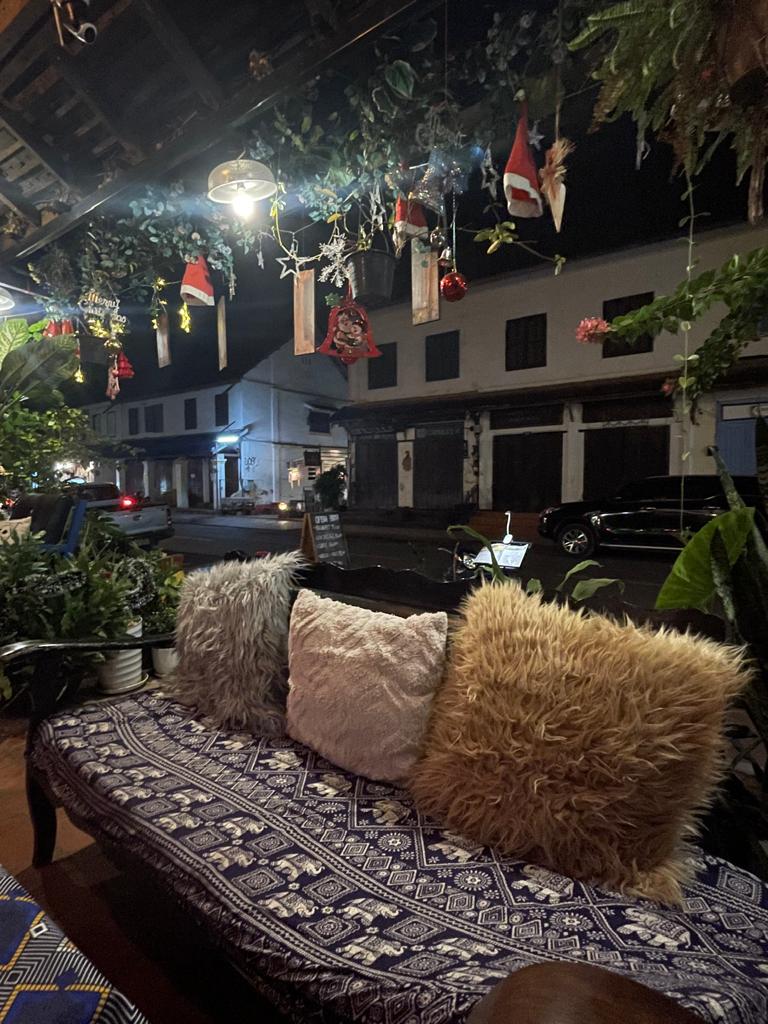

PS: Remember that everything I write here reflects my personal feelings, experiences, and reflections. Many travelers absolutely love this place - its beautiful Buddhist traditions, temples, local markets, and that rare sense of peace and quiet that’s so hard to find elsewhere. The city definitely has its charm, and if you visit, you’ll most likely be enchanted by its unique atmosphere. It’s certainly a place worth seeing when traveling through Laos.
For us, however, as travelers rather than tourists, we tend to look for something more than just the main attractions. We want to experience places - to go a little deeper, understand their stories, and see the everyday realities behind the postcard images. We find ourselves less easily impressed these days, but maybe a bit more observant.
We simply want to share our perspective - because most descriptions of Luang Prabang are filled with admiration and glowing reviews. And that’s fine. But it’s also good to hear different points of view, so you know what to expect ;)
Now, let’s get to the point.
What to see in Luang Prabang?
Temples
Wat Xieng Thong
Known as one of the most important Buddhist sites in the country, this temple’s Royal Chapel was once the place where Lao kings were crowned. One of its most iconic features is the Tree of Life - a mosaic symbolizing the spiritual cycle of birth and death.
Wat Mai Suwannaphumaham
One of the largest and most significant temples in Luang Prabang. Unlike many other temples and monuments in Laos, Wat Mai Suwannaphumaham was spared during the Chinese invasion of 1887–1889 - the soldiers considered it “too beautiful to destroy”. It still leaves the same impression today.
In mid-April, during the Lao New Year, thousands of worshippers gather here to pray and pay homage to Buddha.
Wat Wisunalat
One of the oldest temples in Luang Prabang, founded in 1513 by King Wisunarat. It has been destroyed and rebuilt several times over the centuries but has retained its original charm. Inside, you’ll find one of the oldest and most revered Buddha statues in all of Laos, carefully preserved and honored through daily rituals by local monks.
Wat Sensoukharam
Also known as the “Temple of 100,000 Treasures”, it’s one of the most beautiful temples in Luang Prabang. Built in 1718 by King Kitsarath using 100 000 stones from the Mekong River.
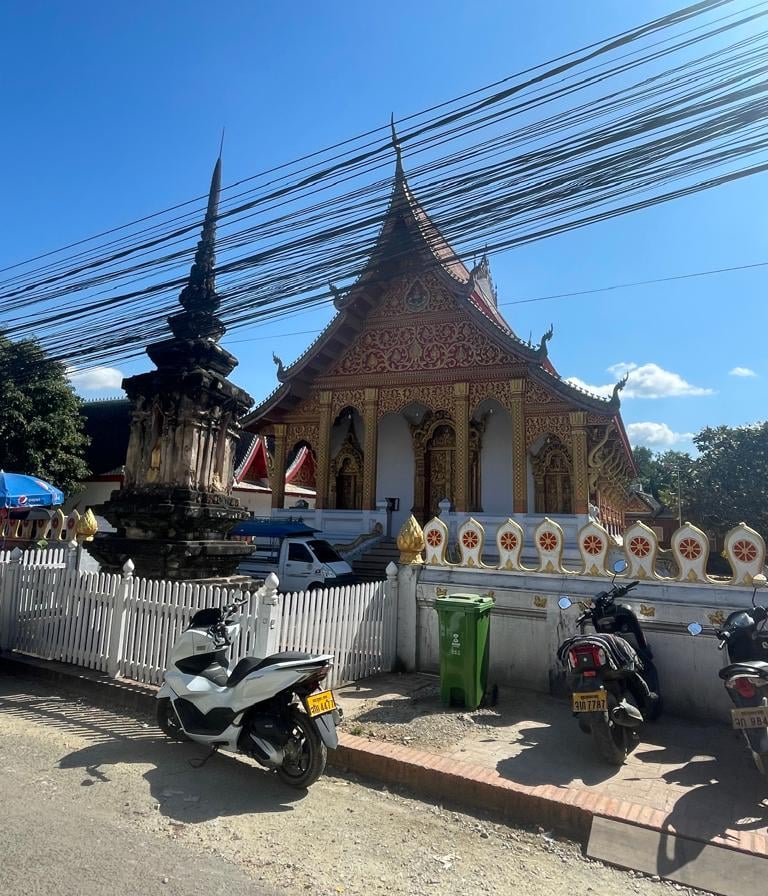

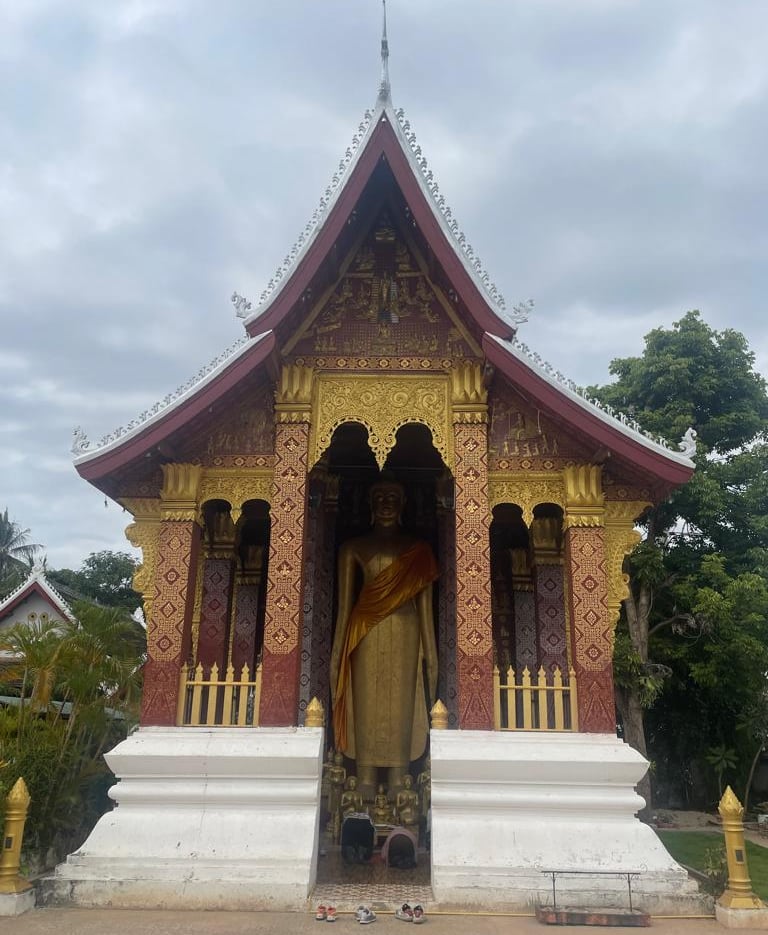

Royal Palace - Haw Kham
The former royal residence, now the National Museum, offers insights into the history and culture of Laos through collections of art, crafts, and historical artifacts. We decided to skip it during our visit.
Mount Phousi
A small hill located in the heart of Luang Prabang, offering panoramic views over the city, rivers, and surrounding mountains. The climb to the top takes about 20–30 minutes and is fairly easy, with a small entrance fee. Unfortunately, due to our shortened stay (and a sudden temperature drop from 28°C to 17°C with strong winds brought by the Chinese monsoon), we had to skip this one too.
Luang Prabang Night Market
One of the most authentic local attractions in the city - at least in our opinion. Every evening, the streets come alive with stalls selling handmade jewelry, clothing, textiles, carvings, and delicious Lao snacks.
Bamboo Bridge
Suspension bridges are among Luang Prabang’s signature attractions, and the Bamboo Bridge is especially interesting because it’s rebuilt or reinforced every year for the rainy season. The rising Mekong floods its banks, and the bridge - made entirely of bamboo - often doesn’t survive. It’s used by pedestrians and cyclists in the dry season, but may be closed during the rains. When we visited, just after the rainy season, the bridge hadn’t survived - but a small ferry crossing was available to reach the other side of the river.
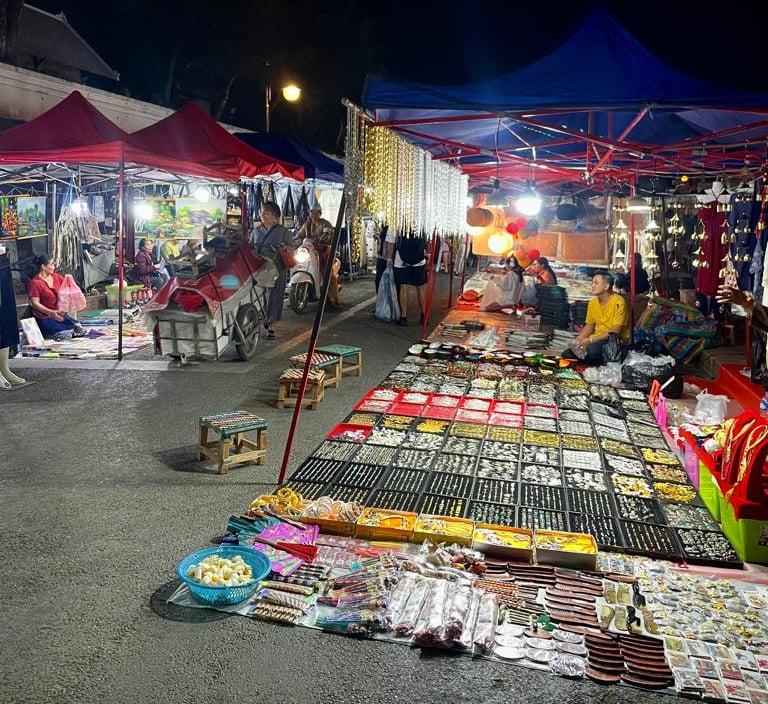


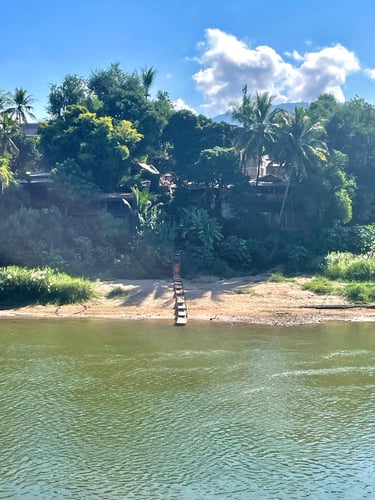
One of the most beautiful waterfalls we’ve ever seen - Kuang Si is located about 30 km from Luang Prabang. It’s a multi-tiered waterfall cascading down from a height of around 60 meters. What makes Kuang Si so unique is the turquoise color of the water, caused by the high calcium content. Keep in mind that the shade can vary depending on the time of day - early morning or late afternoon light makes the color appear deeper and more vibrant, while at midday it tends to look lighter. It also changes with the seasons - during the rainy months, when the surrounding jungle washes more sediment into the pools, the water becomes cloudier and darker. That’s why it’s best to visit in the morning during the dry season, when the water is clearest and the color most striking.
Kuang Si Waterfall
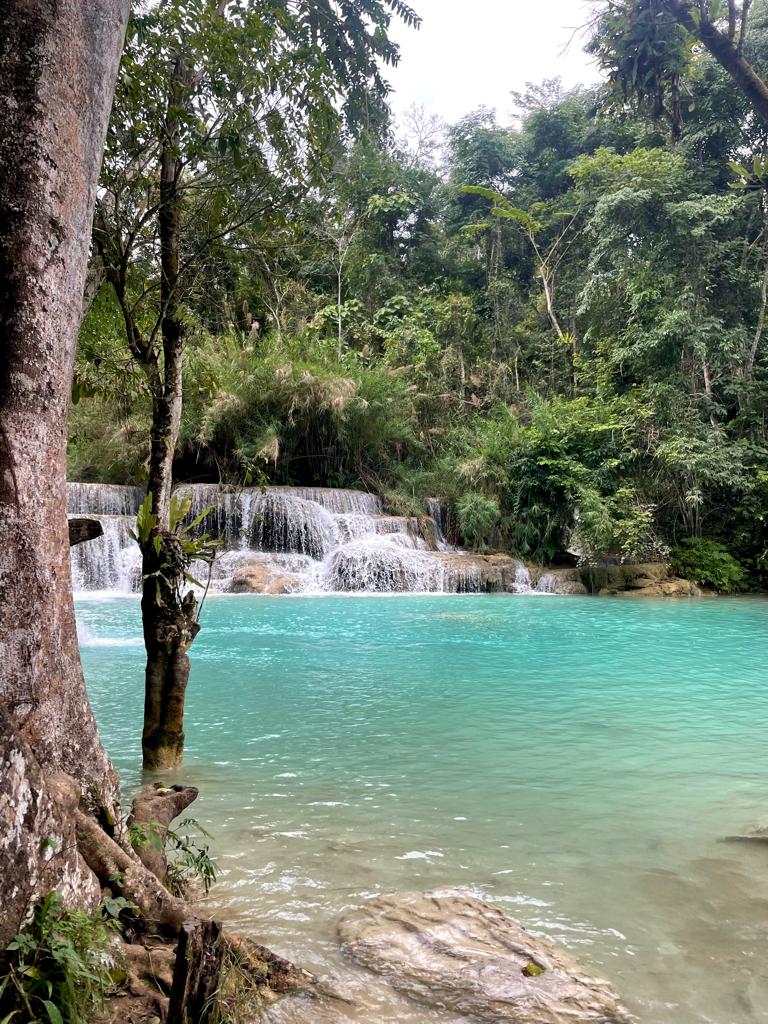

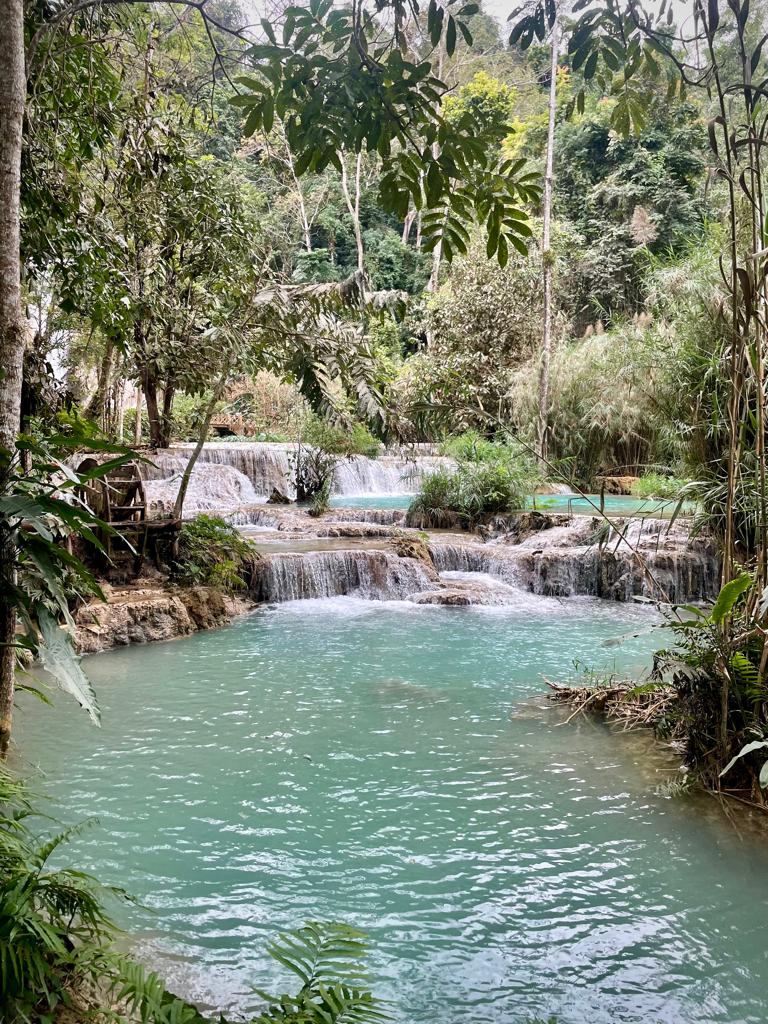


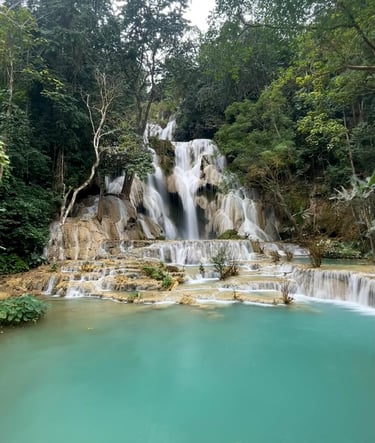
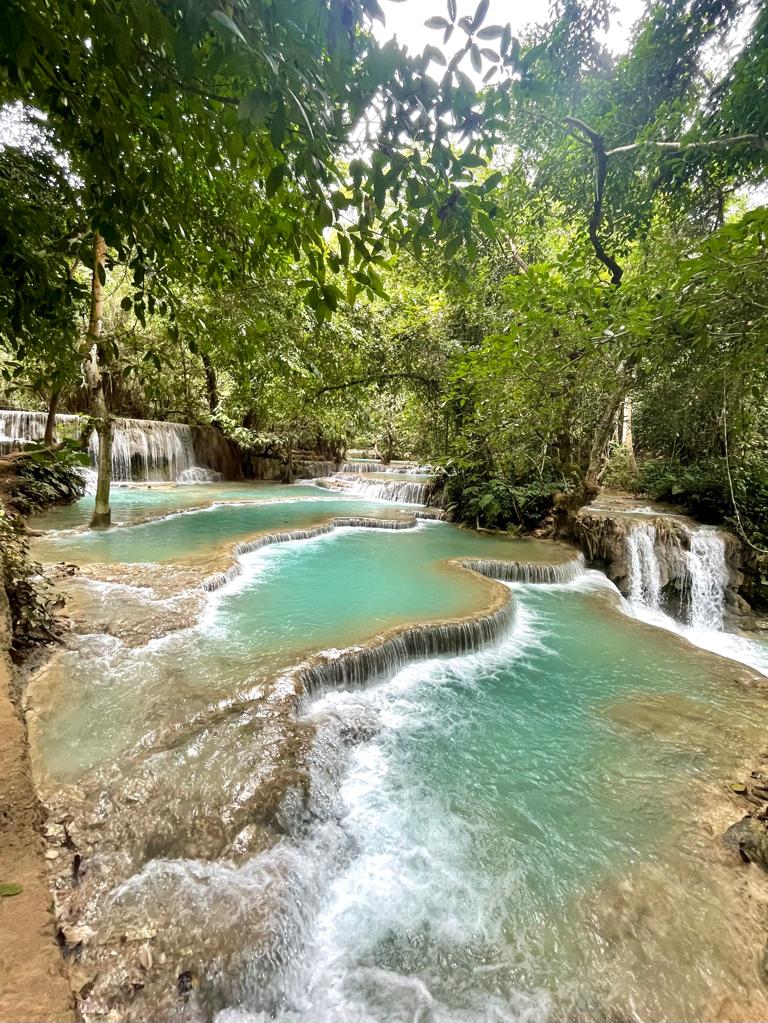

In the same area, you’ll also find the Kuang Si Bear Rescue Center, run by the Free the Bears organization. The sanctuary rescues and rehabilitates Asiatic black bears confiscated from poachers who were selling them to bile farms for use in traditional Chinese medicine. The center operates entirely on donations and sponsorships - you can support their mission by buying a T-shirt or symbolically adopting a bear.
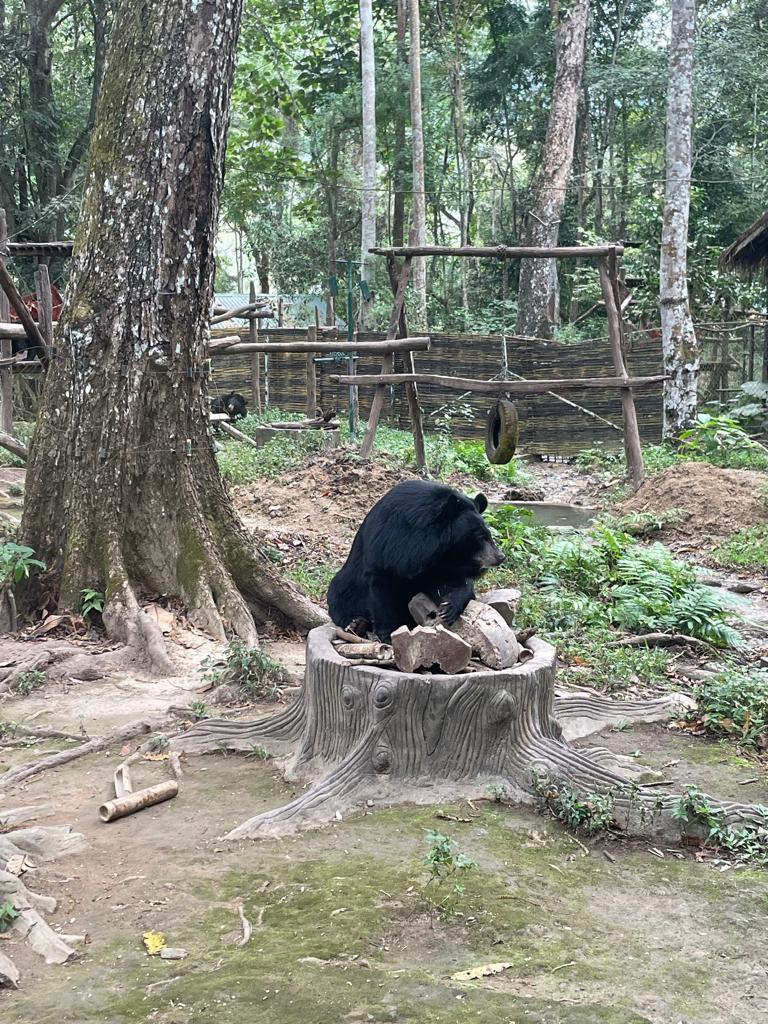

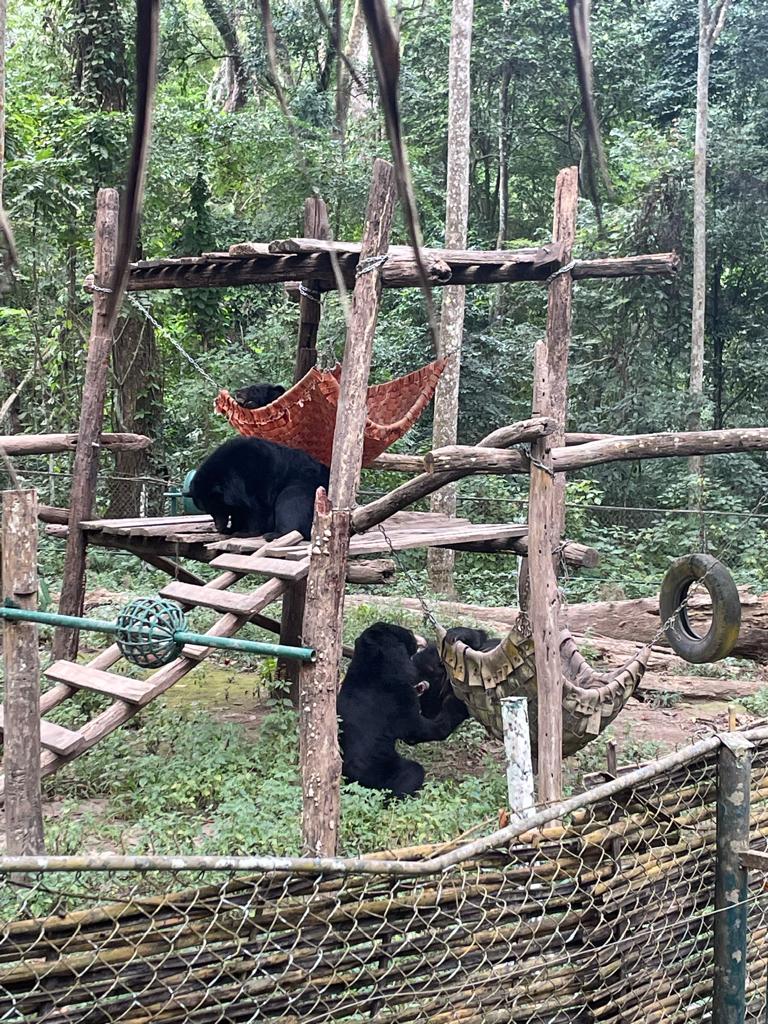

You can also get here by joining an organized tour via GetYourGuide - you can book it directly from the link below.
The morning alms giving ceremony (Tak Bat)
When you click on the image of the monk, you’ll be taken to our featured stories from Laos.
Follow along to keep up with our adventures in real time :)
Every morning at sunrise, the streets of Luang Prabang come alive with one of the city’s most remarkable traditions. Monks dressed in their distinctive saffron robes leave the temples after their morning prayers and chants (and yes, the gongs at 4 a.m. are real – we stayed next to a temple, don’t make our mistake) to collect food offerings from the local community.
Carrying alms bowls over their shoulders, they walk silently through the streets as residents kneel along the roadside and place portions of sticky rice – khao niew - inside. This rice, rich in carbohydrates and slow to digest, is the main staple of the monks’ diet.
The ceremony, known as Tak Bat (or Sai Bat), is meant to take place in complete silence. It is a form of meditation for everyone involved. Once the procession ends, the monks return to their temples to eat. The leftover rice from breakfast becomes their lunch – which, according to Buddhist monastic rules, is the last meal of the day. (Although, to be fair, I have seen some young novice monks eating ice cream from the shop, so maybe there’s some flexibility when it comes to age.)
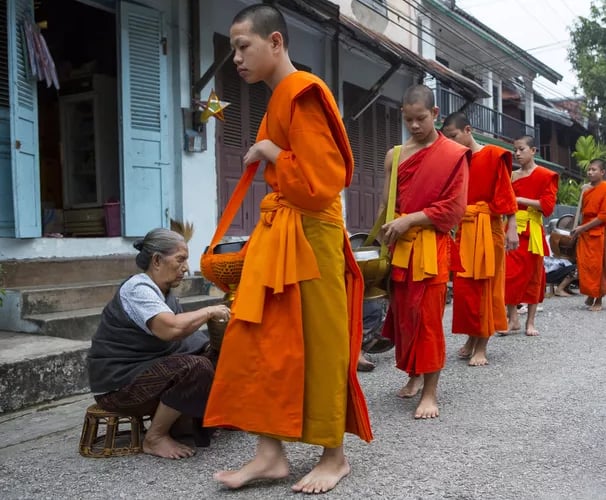

The alms-giving ceremony is not only a way for the monks to receive food, but also a deeply spiritual act for the locals, who earn merit through generosity and support of the monastic community. People wake up before dawn to cook the rice soaked overnight and then find their place along the street, laying down mats and preparing for the ritual. Shoes must be removed, and offerings are given while kneeling.
It’s a beautiful centuries-old Buddhist tradition and an integral part of everyday life in Luang Prabang. Today, it has also become a popular attraction for visitors. If you decide to witness or take part in this ceremony, please remember that it is a sacred ritual, not a tourist performance.
Keep a respectful distance and avoid blocking the monks’ path. Don’t take photos up close, and never use flash. Don’t pose with participants or interrupt the procession. Dress modestly, as you would when entering a temple - shoulders and knees covered. And if you wish to take part, don’t buy sticky rice from vendors on the street; it’s often old and can make the monks sick. Instead, ask your guesthouse to prepare fresh rice for you, or buy it from one of the local women who make it daily. Witnessing Tak Bat is an extraordinary experience - quiet, spiritual, and deeply moving. It’s a privilege to see such a genuine part of Buddhist life, so approach it with respect and mindfulness.
Tak bat ritual in Luang Prabang, Laos. LatitudeStock-Stuart Pearce/Getty Images
If you’re looking for organized tours in Laos, feel free to check out our GetYourGuide link.
By booking through it, you’ll be supporting our future travels - at no extra cost to you.

Need help planning your vacation?
Heading to Laos? Need someone to plan your holiday, or just a few tips and a chat? We’re here for you.
Drop as a line
Do you have questions about traveling to Asia? Suggestions for the blog? Want to collaborate? Need help or just want to meet for coffee?
Feel free to get in touch.

